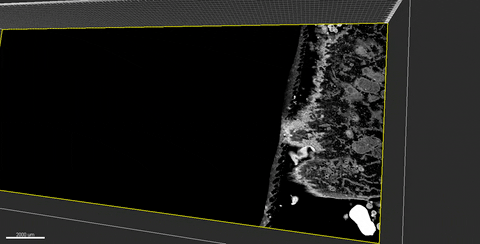Novel Exit: A New Pathway is Revealed

Friday, 05.08.2022
The Bosse group (MHH, LIV, CSSB and InterACt) has revealed a novel exit pathway used by the Human Cytomegalovirus (HCMV) to spread infection in human cells. The research study, published in PLOS Pathogens, shows that HCMV can release new virus particles in bulk pulses. According to the researchers, this new exit pathway contributes to the diversity of HCM viral particles, which may explain the virus’s ability to infect different cell types.
Viral infections begin when a virus penetrates a host cell and remodels the host cell’s apparatus to enable the creation of new viral particles. For infection to spread, these new viral particles must find a way breakthrough the cell membrane and infect the next host cell. The journey that a new viral particle takes to leave the infected cell is known as an egress pathway.
In the one known egress pathway for HCMV, single virus particles are enveloped into small transport vesicles and continuously ejected from the infected cell. “Several studies were, however, showing virus particles inside multivesicular structures, but no one could link them to an egress pathway,” explains Jens Bosse “We were intrigued and decided to investigate the dynamics of these structures in more detail.”
Using an integrative approach based on volumetric live-cell imaging and three-dimensional correlative light and electron microscopy (3D-CLEM), the researchers were able to identify accumulations of enveloped virus particles in multivesicular bodies, which they dubbed multi-viral bodies (MViBs). “With live-cell imaging, were able to demonstrate that the MViBs are transported and subsequently fused to the cellular membrane where they are then released in pulses,” explains the paper’s first author Felix Flomm “The infected cells are essentially spitting out viruses, and the neighboring cell are receiving 100 virus particles their face.” The existence of multiple egress pathways could explain the large diversity of HCMV viral particles.
HCMV causes a lifelong latent infection in most healthy individuals; however, in immunocompromised patients and newborns, it can lead to serious disease that affects different tissues and organs. “Understanding HCMV’s egress pathways is essential for developing novel antiviral strategies for this clinically relevant pathogen,” notes Bosse. The researchers will now look into how the bulk release of HCMV particles is triggered within the infected cell.
Source: Flomm, F.J., Soh, T.K., Schneider, C., Wedemann, L., Britt, H.M., Thalassinos, K. et al. (2022) Intermittent bulk release of human cytomegalovirus. PLoS Pathogens. https://doi.org/10.1371/journal.ppat.1010575
Our review based on the story: https://pubmed.ncbi.nlm.nih.gov/35607767/
With editorial mention: https://onlinelibrary.wiley.com/doi/10.1111/mmi.14950
And front cover: https://onlinelibrary.wiley.com/doi/10.1111/mmi.14746
Text by M. Prass (CSSB)
Prof. Bosse holds a RESIST professorship at the Hannover Medical School (MHH), is group leader at the Centre for Structural Systems Biology (CSSB) and associated with the Leibniz Institute of Virology (LIV). He and his group are part of InterACt.
Latest news about Leibniz ScienceCampus InterACt